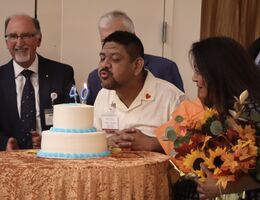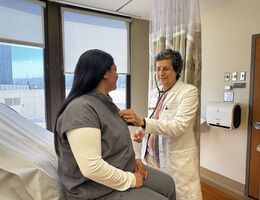

Heart rhythm disorders, or arrhythmias, affect millions of people and come in mild and serious forms. Ravi Mandapati, MD, medical director of the International Heart Institute, outlines the most common types of arrhythmias, how they impact daily life, and the treatment options and lifestyle changes that can help patients thrive.
Common Types of Arrhythmias
- Atrial fibrillation (AFib) – causes irregular, often rapid heartbeats
- Bradycardia – an abnormally slow heart rate
- Tachycardia – a fast heart rate originating either from the upper chambers (supraventricular) or lower chambers (ventricular)
- Premature contractions – extra heartbeats that may feel like skipped or fluttering beats
Of these, AFib is particularly widespread and can lead to symptoms such as fatigue, dizziness, and shortness of breath. While some arrhythmias may be harmless, others can disrupt daily life or even become life-threatening if left untreated.
“While some arrhythmias are harmless, others can be disruptive or even life-threatening, “ Mandapati said. “Many people live full lives with arrhythmias, but they may need to adapt their daily routines to manage symptoms, take medications consistently, and monitor their heart rhythm regularly.”
When to Seek Medical Help
Patients living with arrhythmias should watch for warning signs that may indicate a need for medical evaluation. Symptoms include:
- Palpitations (a fluttering or racing sensation)
- Dizziness or lightheadedness
- Fainting
- Chest pain
- Shortness of breath
- Unusual fatigue
Sudden or worsening symptoms, especially those that come on quickly, should prompt immediate medical attention.
Treatment Options to Regulate Rhythm
Treatment varies depending on the type and severity of the arrhythmia. Some of the most effective options include:
- Medications – such as beta-blockers or anti-arrhythmic drugs to stabilize heart rhythm
- Electrical cardioversion – a controlled electric shock that restores a normal rhythm
- Catheter ablation – a minimally invasive procedure that targets and destroys abnormal tissue causing the arrhythmia
- Implantable devices – pacemakers or defibrillators that monitor and correct abnormal heart rhythms
Read: Advanced treatment options for atrial fibrillation at International Heart Institute
“These treatments work to restore a normal rhythm or prevent dangerous fluctuations, allowing patients to feel better and avoid complications,” Mandapati said.
Lifestyle Changes
Lifestyle choices can play a key role in managing arrhythmia. A heart-healthy routine should include:
- A balanced diet low in sodium and processed foods
- Regular moderate exercise to support cardiovascular health
- Stress management through mindfulness, yoga, or therapy
- Avoidance of stimulants like caffeine, nicotine, and alcohol, which can trigger arrhythmias
“Even small lifestyle improvements can make a big difference in symptom control and overall heart function,” Mandapati said.
Balancing Activity with Safety
Staying active is important, but it should be done with care. Mandapati encourages patients to:
- Engage in safe, doctor-approved physical activity
- Pay attention to their body’s warning signs
- Rest when experiencing symptoms like dizziness or palpitations
- Have regular checkups and follow individualized care plans
“Most people can keep enjoying their work, hobbies, and even travel with just a few thoughtful adjustments and monitoring,” Mandapati said. “When patients understand their condition and treatment options, they’re empowered to take control of their health,” Mandapati said.
The International Heart Institute is a state-of-the-art care facility with highly trained specialists and advanced technology. Make an appointment with a cardiologist today.


